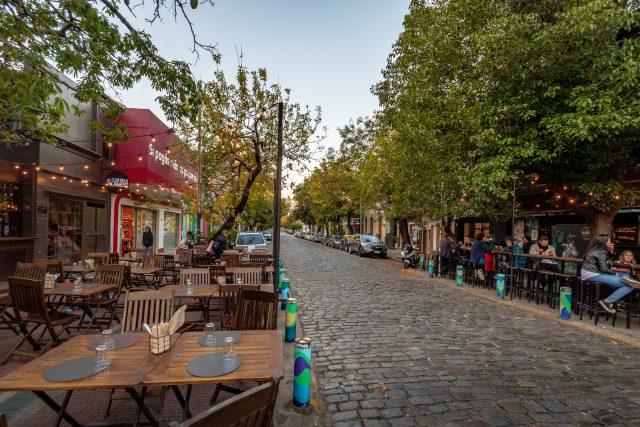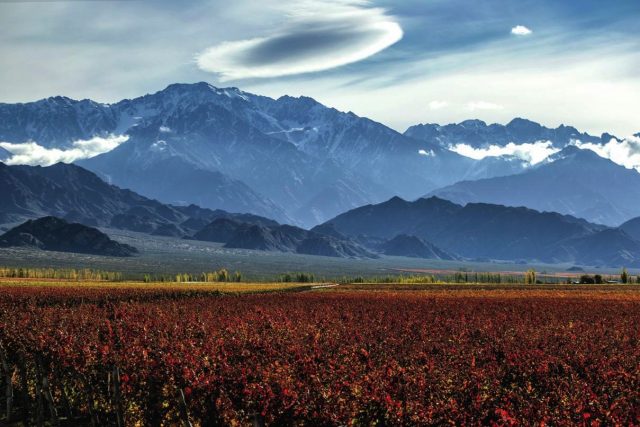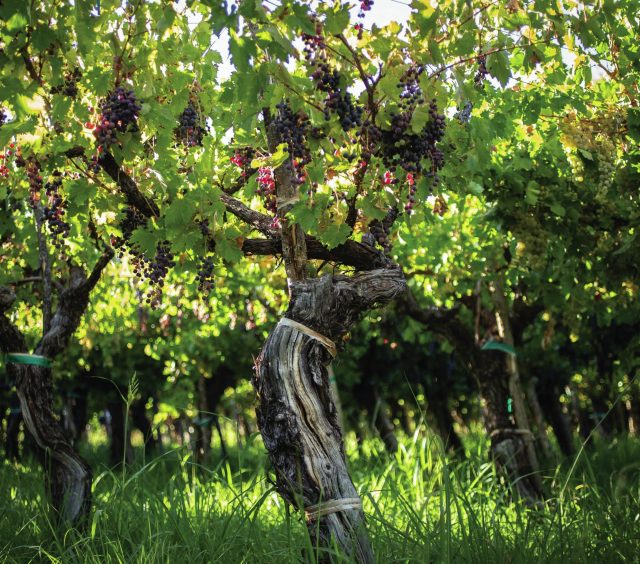This website uses cookies so that we can provide you with the best user experience possible. Cookie information is stored in your browser and performs functions such as recognising you when you return to our website and helping our team to understand which sections of the website you find most interesting and useful.
How Argentinian wines can evoke a sense of place
While Argentina is world famous for its successful Malbecs, many of the country’s winemakers are moving in different directions, highlighting the flavours of their own particular terroirs, writes Jessica Mason.

Ascribing cultural identity to wine can be a subjective topic. But there are arguments that suggest wine can evoke a sense of place owing as much to the influence of people and the local character as it might attribute to its physical roots or geographical terroir.
Over the past few years Argentinian wine has evolved, and has been rediscovered by consumers not just for the full-bodied plumminess of its Malbec grapes but for all of its advancement and variation in flavour provided by constant research. As such, Argentina’s revolution in wine is finally coming to fruition, taking us from juicy whites through to some of the most voluptuous Cabernet Franc blends, right through to a whole raft of zippy and exciting Criollas. From north to south, each province in Argentina has a nuanced style, where the wines impart both the personality of that region and the unique skill of the winemakers there.
According to figures published by the Instituto Nacional de Vitivinicultura (Argentine Viticulture Institute), Argentina exported 265.7 million litres of wine in 2022 (down by 21% on 2021’s figure). But according to Vinex, a live global business-to-business marketplace for wine professionals, the declining volume was no indication of calibre.
During 2022, Argentina suffered unusual weather – at least three significant frosts and a hot dry spring, as well as heavy rainfall and hail. Making wine in such circumstances has been a challenge of winemakers’ skills.
Despite the bad weather, it resulted in one of the best harvests in terms of quality. Winemakers across the board report that the hardships that saw yields down by 13% on average also led to extremely high quality for all varieties. Laura Principiano, the oenologist at Familia Zuccardi, points out that “the acidity in 2022 suggests that the wines will age wonderfully”, while Agustina Hanna, head winemaker at Ruca Malen in Mendoza, said “2022 was a great year in terms of quality. The reds have a mellow texture and lovely freshness.” Verónica Ortego at Mythic Wine, also in Mendoza, predicts “an excellent year for Cabernet Franc, with vivid colour and good concentration”.

Luckily for Argentina, with a strong remaining inventory from the 2021 harvests, global and local demand remained stable. Some argue that the challenges that Argentinian people face every day have taught them to think on their feet, and constantly pivot, plan quickly, and respond to a crisis. British wine expert Joe Wadsack explains: “Poor economic circumstances and geographical isolation are both drivers for innovation and ingenuity. The old phrase ‘necessity is the mother of invention’ was never truer. There is an almost MacGyver-like attitude in Argentine farm and vineyard owners. A real sense of self resilience and getting things done.”
A recent Vinex journal, Food Quality and Preference, outlined how the economic climate in Argentina has always heavily affected the success of its wine sector. Indeed, the findings showed how, last year, while Argentinian wineries experienced higher labour and transport costs, and inflation rocketed by 55.1%, still many wineries stayed pro-export, with producers looking for new ways to boost exposure of their wines to the rest of the world.
Marketing Argentine wine internationally, however, is not done via a simplistic core message. Where flagship Malbec once ruled, now each province’s quirks and winemakers’ idiosyncratic styles are being brought to the fore. It’s turning the heads of wine fans globally, who are intrigued by the way artful winemaking can showcase such diversity of flavour.
Karim Mussi Winemaker is a wellknown company in the Uco Valley, not just for the Altocedro winery, which Mussi founded in La Consulta in 1999, but also for a raft of brands such as Abras in Cafayate, Alandes, The Phoenician, Qaramy, and Los Poetas. Mussi describes his team as a group of “crazy people with commitment and values”, and is no stranger to how the power of personality can have a positive impact on running a wine business. Among his many loves, Mussi, who began as a “one-man army” states that he is “more than happy to discuss world politics, current events, 17th-century British philosophy, classic rock (The Doors and Led Zeppelin in particular), and the genius of Ayn Rand”, but it is his head of communications and marketing, Majo Peroni, who digs deep on the topic of how personality can cultivate style and guide drinking trends. Peroni explains that, because of Argentina’s Italian heritage, café culture has always been prevalent in its cities, and says that – despite the quality of Argentina’s coffee not being especially high – its inhabitants have a “halo of friendliness”born from this. 
“In Spain, they have tapas culture, and in England you have pubs, but Argentina has cafés as a place where people go to socialise. We have meetings, chats, whatever – but always in cafés,” says Peroni, explaining how coffee has always been integral to Argentina’s street culture “not because of the quality but because of the social aspect it represents”.
According to Peroni, many parts of Argentina have “a culture of drinking sugar and this means they love sweet things” she asserts: “England is more savoury and dry, but Argentina has a sweet tooth, because of its Italian heritage, we are fans of the bitterness and everyone adores Cinzano and Fernet.”
Wadsack agrees and suggests that Argentinian winemakers could lean towards fuller, bolder and juicier presentations of flavour since their palates are already readied.

He says: “There is a cultural tolerance towards bitter flavours and a huge sweet collective tooth. One presumes this was appropriated from their Latin, largely Italian roots, and a huge national appetite for Dulce de Leche and Fernet Branca and Coke. The cola itself is nearly twice as sweet as the formula sold in the UK.”
Added to the Argentinian propensity to scale flavour in both sweetness and bitterness and offer up a broad spectrum of variation, there is also the obvious fact of geographical regional nuance.
Wadsack says: “There is a real sense of ‘wilderness’ and ‘outback’ in the most remote areas of the country that inevitably sets the tone for the wines’ character. The greater the proximity to urban centres a vineyard is, the more polished those wines tend to be.”
Zuccardi’s Principiano points out: “The Uco Valley has many conditions that are very different from other places in terms of its weather and soils, and also differing altitude. In Tupungato, its altitude ranges from around 1,600m above sea level in the north near the Andes, and just 850m above sea level in the east. Plus, the influence of the mountains is really important as, in the day there is a lot of wind.” This, she attests, along with the unique calcium carbonate soils, helps Zuccardi to produce high-quality white wines, especially its Chardonnays.
Wadsack describes how regionally, “Argentina, despite being known for relatively few grape varieties, has huge diversity. It only takes a short visit to discover the sheer scale of the country. Naturally, it’s very long, but there is huge difference in altitude between Salta and Patagonia. It wouldn’t be possible to make wines from these two regions taste the same. They are virtually polar opposites in all criteria that matter.”

Bodegas Salentein’s manager of hospitality and tourism, Francisco Bragoni, says: “Even in the same area we have different characteristics and different soil profiles that help with the minerality too.” Bragoni says that although it was “important to have a first certification for the San Pablo GI, now we realise how important it is to have more flexibility and homogenisation too”. He says that because of the diversity available, Salentein needs to “divide areas into smaller spaces so they can be analysed to discover the different characteristics”. Sustainability is a vital part of making wines in the country. Magdalena Pesce, general manager of Wines of Argentina,says her organisation “recognises that sustainability is key to ensuring a successful future and is committed to producing premium wines with a positive social, environmental and economic impact”.
One issue is not just how to identify the diversity of Argentinian wine between locations, but also how such variation can be re-communicated to its broad-reaching demographic. Amansado Wines, nestled in Luján de Cuyo in Mendoza province, has found a way of tackling such an issue. CEO and sales manager Eugenia Brennan explained that the family’s true loves have always been “wine and horses”, and because of this, it uses a horse as a motif on its labels. However, she says the winery puts out a vast array of styles, and this diversity needed to be highlighted.
For instance, for Amansado’s more accessible wines, in both price point and easy-drinking style, the images on the labels of the horse are cartoons, to reflect the wine’s relaxed playfulness. However, as the wines become more premium, and their prices creep upwards, the image of the horse becomes more stylised and sophisticated. This, she explains, is “a way for us to communicate more about the wines we make in a way that people will understand at a glance”. Puerta del Abra’s winemaker, Delfina Pontaroli, says that people need to understand how “even in the same region, wines can be totally different based on the winemaker’s perception and preferences”. She explains: “We, as winemakers, tend to look for our wines not only to express as faithfully as possible the place that they come from, but also to transmit and generate emotions through a sensory journey, and that is determined by our personal background, memories, taste and experience.”

Argentine Criollas are starting to show real promise for their exciting flavours, ranging from zesty citric notes through to wild fermentation leanings that taste herbal, resinous, and slightly earthy. Sommelier Mariana Onofri produces wines at Alma Gemela in Lavalle in Mendoza using the Teróldego, Carignan, and Monastrell varieties, while Mendoza’s Paso a Paso’s winemaker, Norberto Paez, creates sprightly, unfiltered Criollas with low sulphites. Lucas Niven, the winemaker at Mendoza’s Niven Wines, uses concrete eggs, and ramps up the skin contact in his blends, having hunted out wild-grown vines on the family estate.
Additionally, with their characterful hand-painted bottles and artistic labels, Criolla wines are increasingly standing out on the shelves. Criollas in Argentina tend to attract younger drinkers, and poeple who who might not always have considered wine to be their drink. Niven says: “I learned a lot about Criollas, and knew the styles I wanted to make, and the ones people were getting excited about. I’m glad more people are drinking them and appreciate them. This is a revolution. But when it comes to the best, I really only make those for me. Nobody else. Sometimes I think they are too good to share.”
Pontaroli says the world needs to see this broad scope of flavour as a plus point, because, “diversity is a very good thing” – especially in wine. “The same way that winemakers are all different, so are consumers; and there must be different approaches to wine for everyone to find their favourite.” Wines of Argentina’s Pesce sums up the state of the country’s wine industry: “Argentine viticulture is experiencing an exceptional period of innovation, diversification, sustainability and international recognition.”

